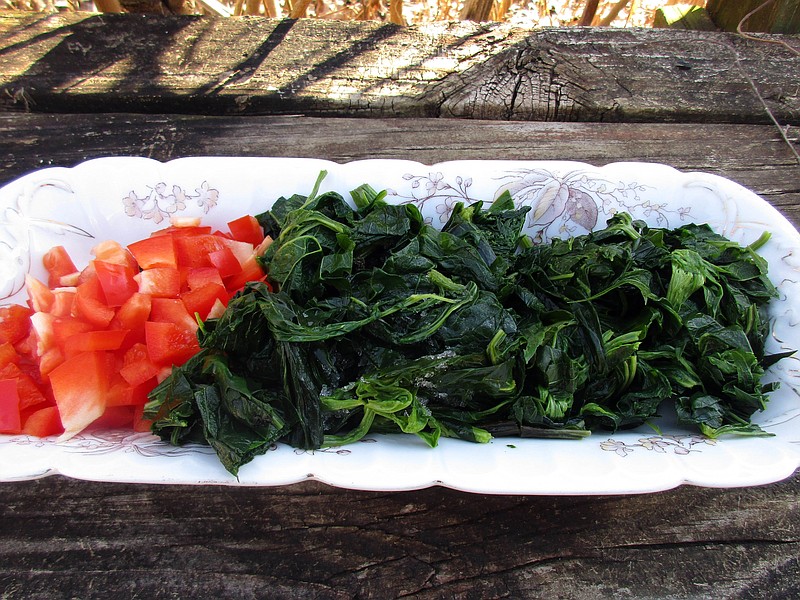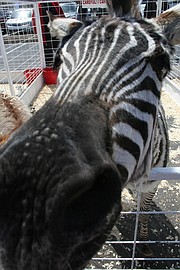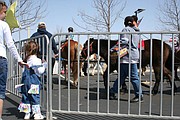If someone offered you a choice between an edible plant named cow parsley or one named goldenglow, which one would you prefer? I'm betting on goldenglow, although both are the same plant.
Goldenglow leaves have a nice, sweet and mild taste that can be used in recipes to replace spinach or other mild-flavored greens. It has been used by the Cherokee, who call it sochan, and other southern Native American nations, even in modern times, and it is regaining popularity across its range because it is easily available and very nutritious.
And as my husband and I can attest, it can be used to make a very tasty breakfast casserole using goldenglow and wild leeks that we harvested right from our own backyard!
I first learned about the edibility of this plant from Lincoln University native plants educator Sue Bartelette, who learned from elders in her hometown, Lupus, to forage on this and other natives naturally growing in the open woods along the Missouri River. Its common name, goldenglow, refers to the fact that the flowers that bloom in the fall are bright yellow and glow under the deep shade of open woodlands. The name cow parsley is given because deer and other ruminants eat it without hesitation. Another common name is tall coneflower.
Leaves can be harvested from March through May. Their nutritional value includes Vitamins A and C, folic acid, manganese, zinc, phosphorus, copper, magnesium, iron, calcium and potassium. Leaves can be blanched and frozen for later use. We used leaves after being one year in the freezer, and the flavor and texture remained the same.
Unlike some native plants like pokeweed, or poke sallet, there is no need to double-boil leaves and rinse them before using because goldenglow is not toxic. At LU we prepare soups, casseroles and a few appetizers with the leaves. We have goldenglow and many other native edibles growing at LU FINCA garden on campus in Jefferson City. It is very easy to maintain because it does not need irrigation and has no major pests or diseases.
It is in the sunflower family and is a perennial plant that starts sprouting in early spring and can reach up to 9 feet. According to the Natural Resources Conservation Service, it is very common in Missouri and is widespread across the United States and Canada.
Goldenglow's scientific name is Rudbeckia laciniata, and is the only member of the genus Rudbeckia, including black-eyed Susan, brown-eyed Susan and sweet black-eyed Susan, that is known to be edible, especially in the eastern United States.
The Cherokee and other Southeastern nations have collected wild greens like goldenglow generation after generation; however, most of the knowledge, as often happens with other wild native foods, is being lost as these are replaced by other foods. Fortunately, goldenglow, among other spring greens, is foraged and consumed widely. In North Carolina, the Cherokee Preservation Foundation is leading a statewide effort to restore this disappearing tradition. Concerns of overharvesting have been discussed, as with other wild edibles such as wild leeks; however, a study by Dr. Joe-Ann McCay of the NC Arboretum has shown that goldenglow is so easy to grow from seed or by division that those concerns are overstated.
At Lincoln we have established it in demonstration plots on campus and at George Washington Carver Farm in Jefferson City and found that it responds well to browsing and pruning. We found that the plant continues growing and still blooms in the fall if pruned no later than mid-June. Because of its natural adaptation to shade, this plant can be established under the deep shade of trees or on the north side of buildings.
The leaves remain green as a source for winter food for whitetailed deer and the occasional rabbit. In the wild, it can be found in open bottomland under the shade of silver maple, sycamore, boxelder, cottonwood and other trees found in riparian corridors along rivers or large creeks. It can be grown from seed or propagated from underground stems. It can form stands where spring wildflowers like bluebells, sweet Williams and spring beauties also grow.
Nadia Navarrete-Tindall has been an associate professor and native plant specialist for the Lincoln University Cooperative Extension since 2008. LU's Native Plants Program provides educational tools to students and the public on how to identify, grow and market native edible plants and those that are important to pollinators.
Goldenglow Breakfast Casserole
Makes: 8 to 10 servings
Ingredients:
6 eggs
1 cup milk
3 cups goldenglow greens, finely chopped. Use fresh, uncooked leaves or blanched leaves.
1 cups shredded mozzarella or cheddar cheese or queso fresco
1 small onion, minced
4 teaspoons olive oil
2 cups mushrooms, minced or sliced
cup red peppers, minced
cup pork sausage cooked, in pieces (optional)
6 medium potatoes, boiled and sliced
Seasonings and herbs to taste
Salt
Directions: Heat oil in large skillet on medium heat. Add greens, onions, pepper and mushrooms.
Cook and stir eight to 10 minutes or until tender. Set aside to cool down. Cover a greased 9-by-13-inch casserole dish, and layer sliced potatoes on bottom of dish. Set aside.
In a bowl, whisk eggs and milk, then add goldenglow mix, cheese, sausage, herbs, spices and salt.
Pour mixture over dish with potatoes.
Bake for 45 minutes to one hour or until middle of quiche is set and knife comes out clean. Let stand 10 minutes before serving.
Goldenglow greens can be blanched in advance and frozen for up to a year. If frozen goldenglow is used, thaw it for one hour before using.



